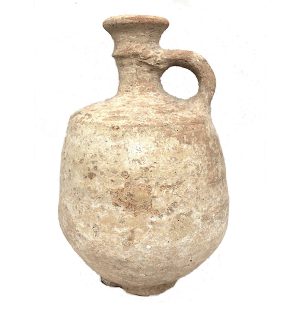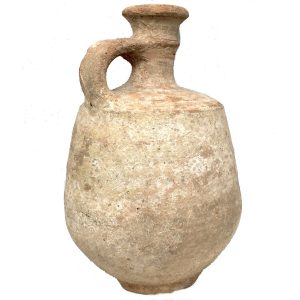Ancient Earthenware Jarlet, Roman North Africa H: 4.6″
Original price was: $225.00.$125.00Current price is: $125.00.Ht: 4.625″ Dia: 3.625” | FREE SHIPPING WITHIN CONTINENTAL U.S.!
Most small utilitarian pottery jars like this were made in ceramics centers in Africa-Proconsularis, the Roman North Africa territories and were either a perfume, oil, ointment or cosmetic jars. Wheel made it is simple with grooved furrows etched on the surface.




